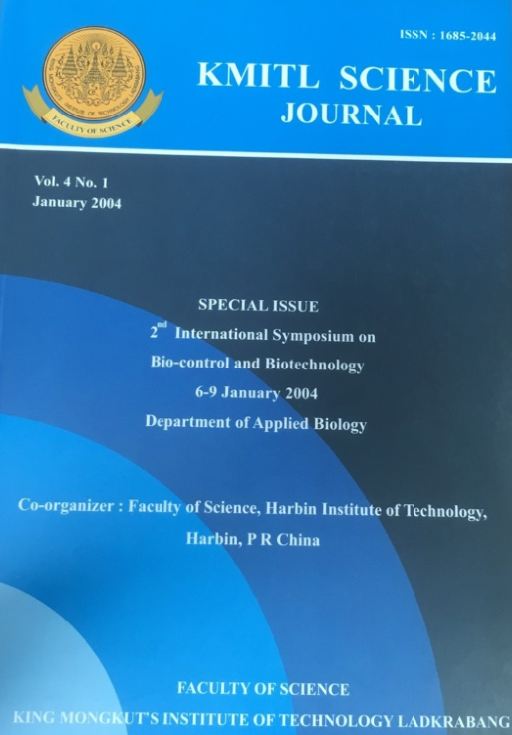Inhibiting Effect of 4 Toxic Mushroom Strains and Their Toxins on Cytospora chrysosperma (Pers.) Fr.
Main Article Content
Abstract
Inhibiting effect of 4 toxic mushroom strains (Amanita virosa Lamb. ex. Secr., Amanita muscaria (L. ex. Fr.) Pers. ex. Hook., Lepiota clypeolaria (Bull. ex. Fr.) Quil., Lactarius vellereus (Fr.) Fr.) and their toxins on Cytospora chrysosperma (Pers.) Fr. Were studied. The results showed that the strains Amanita virosa and Lepiota clypeolaria inhibited growth of Cytospora chrysosperm. The strain Amanita virosa had a better inhibition effect. In antagonistic experiments, Cytospora chrysosperma promoted the growth of Amanita virosa. The eefect being the highest at 74 h, the inhibition of Amanita virosa to Cytospora chrysosperma is also highest. Lactarius vellereus has growth-promoting effect on Cytospora chrysosperma. The percentage of growth inhibition of toxin crude extracts from 4 toxic mushroom strains on Cytospora chrysosperma mycelium are all 100 %, and the percentage of spore sprouting-inhibition is between 93.36 % - 97.29 %.
Keywords: Toxic Mushroom Strains, Amanita virosa, Amanita muscaria, Lepiota clypeolaria, Lactarius vellereus, Cytospora chrysosperm
Corresponding author: E-mail: cast@kmitl.ac.th
Article Details
Copyright Transfer Statement
The copyright of this article is transferred to Current Applied Science and Technology journal with effect if and when the article is accepted for publication. The copyright transfer covers the exclusive right to reproduce and distribute the article, including reprints, translations, photographic reproductions, electronic form (offline, online) or any other reproductions of similar nature.
The author warrants that this contribution is original and that he/she has full power to make this grant. The author signs for and accepts responsibility for releasing this material on behalf of any and all co-authors.
Here is the link for download: Copyright transfer form.pdf
References
[2] Mao Xiaolan, Toxic Mushrooms in China and Poisoning Types, J. Microbiol, 14(1), 1987, 42-47.
[3] Mao Xiaolan, Toxic Mushrooms and Poisoning. Large-size Fungi of China (Henan: Publisher of Science Technology, 2000).
[4] Mao Xiaolan, Toxic Mushrooms of Amanitaceae of China and Toxin. J. Microbiol, 18(3), 1991, 160-165.
[5] Rumack B H, Salzman E. Mushrooms poisoning: Diagnosis and Treatment (West Palm Beach, Florida: CRC Press, 1978).
[6] Weiland T, Poisonous Principal of Mushrooms of the Genus Amanita, Science, 159, 1968, 946-952.
[7] Yang Zhongya. Control Handbook for Toxic Mushrooms Poisoning (Beijing: Publisher of People’s Hygiene, 1983).
[8] Song Ruiqing, Huang Yongqing. Dendrocola Mycoflora and Important Diseases on Korea Pine (Publisher of Nor. For. Uni. 2001).


